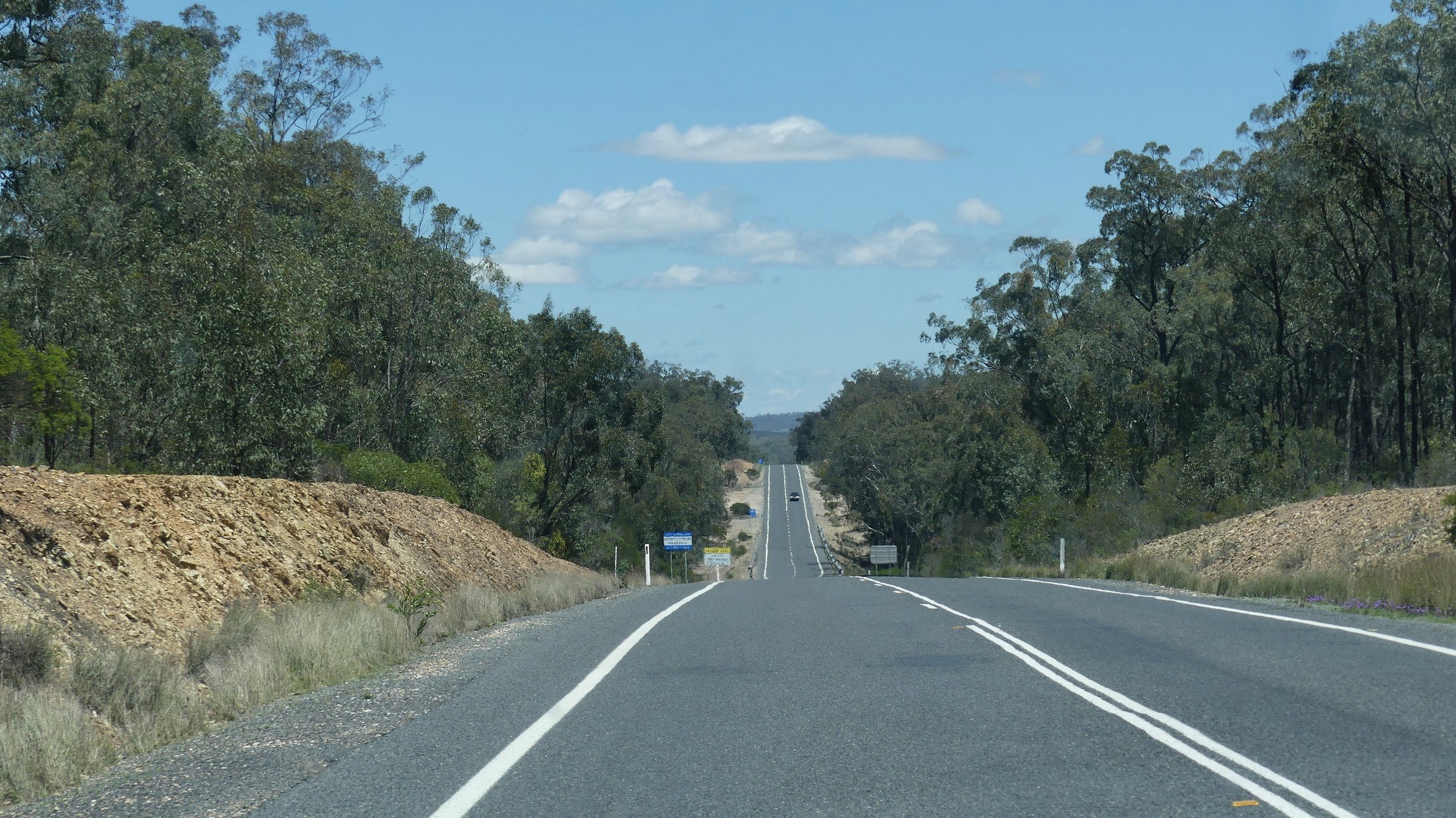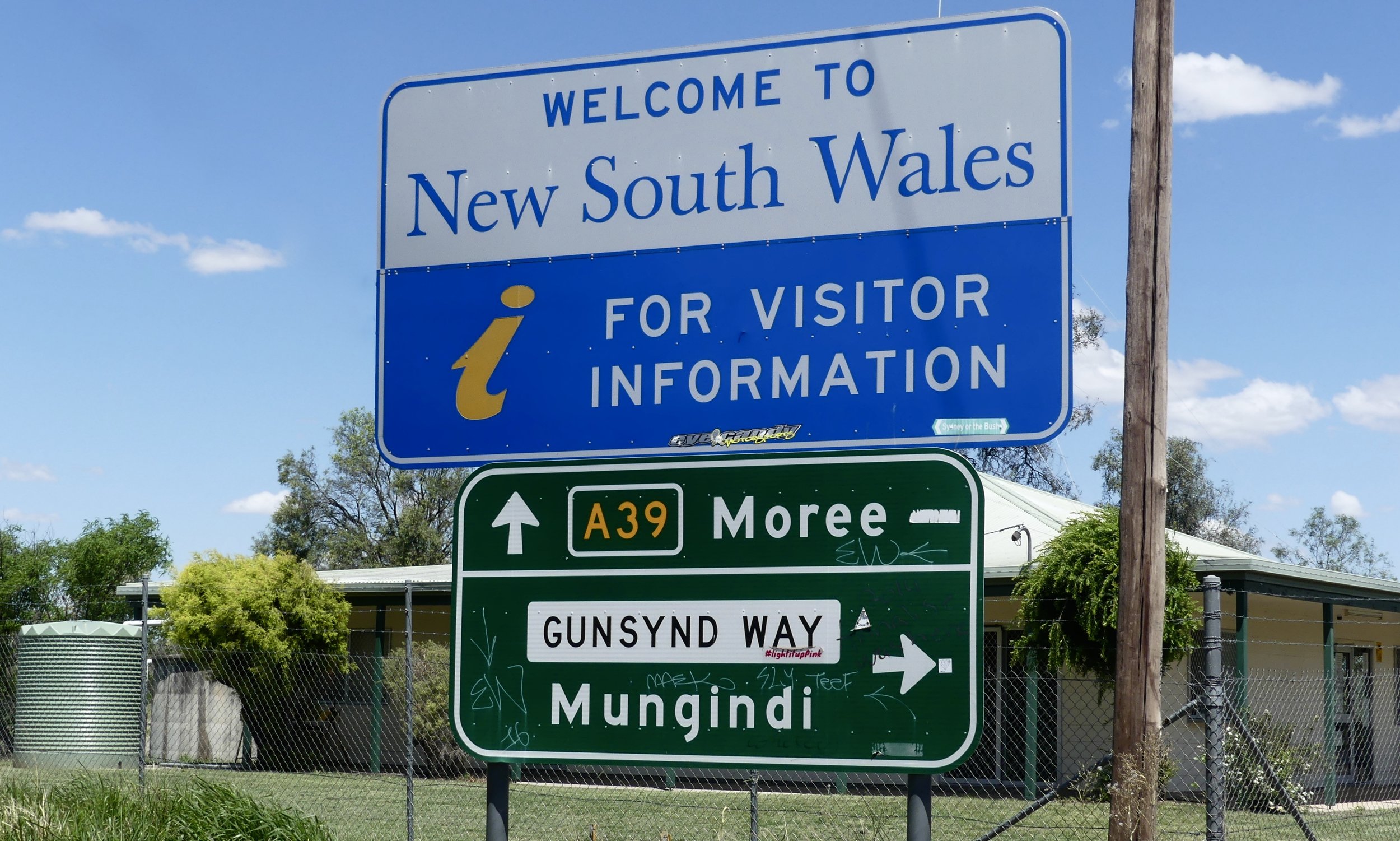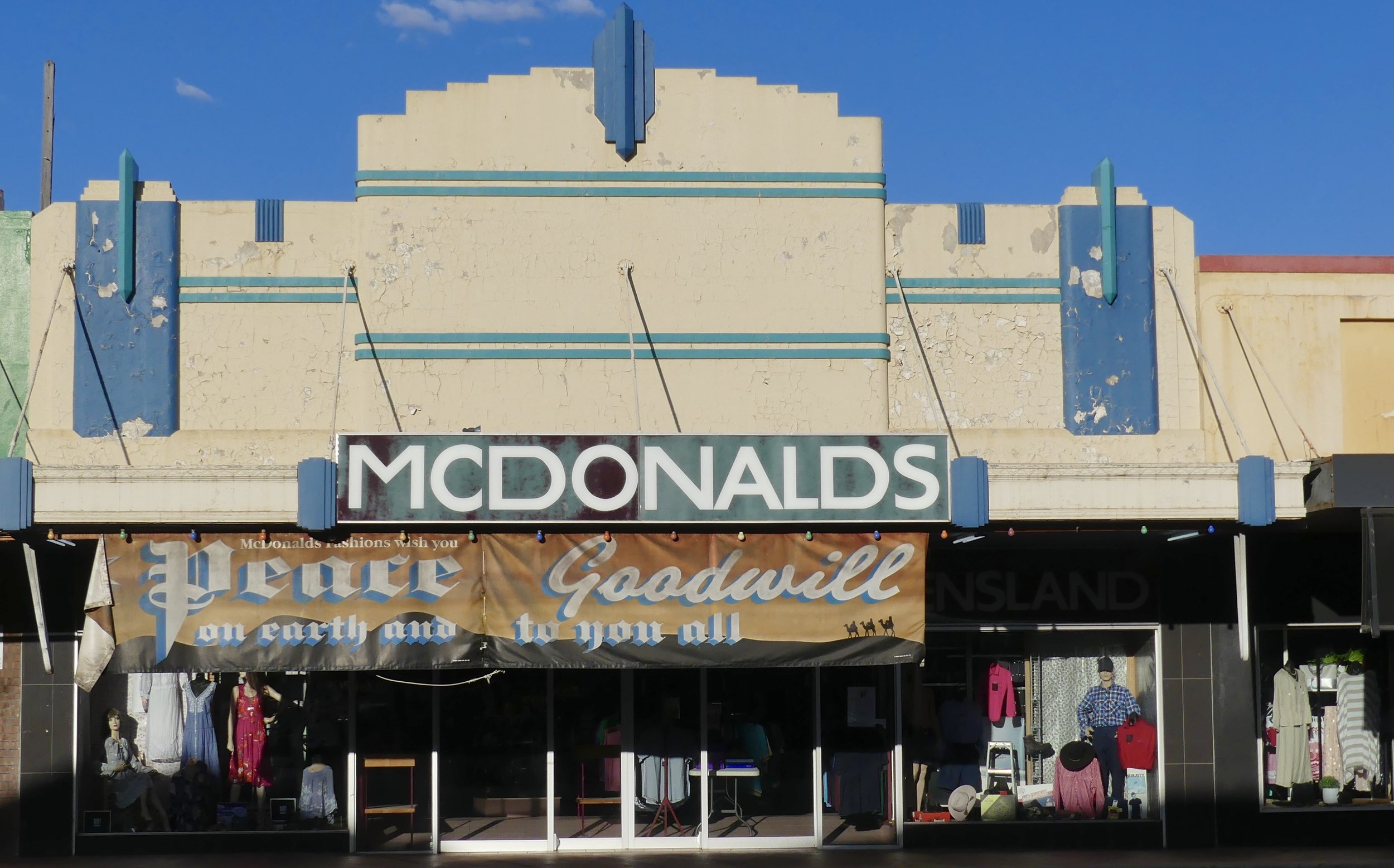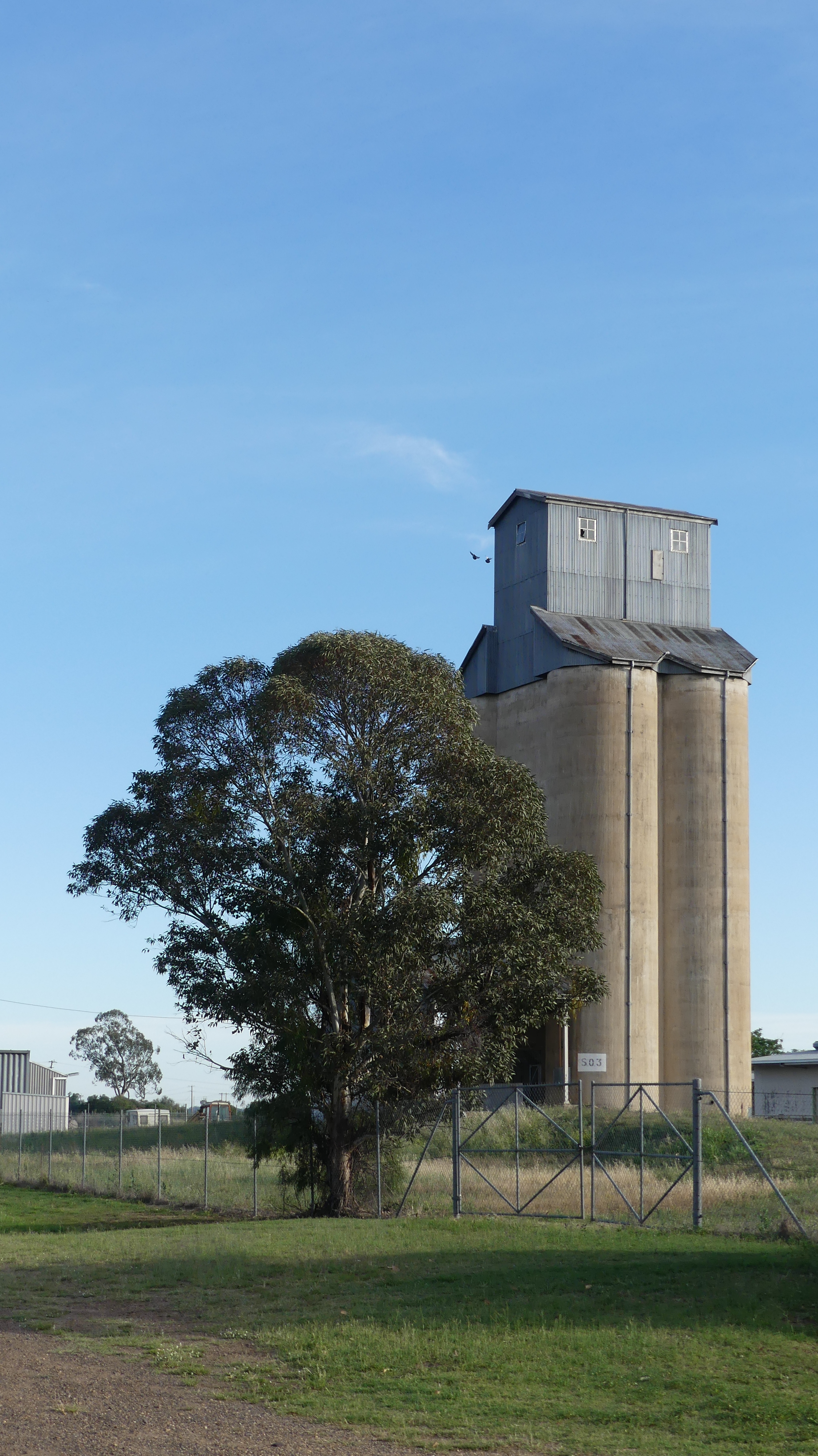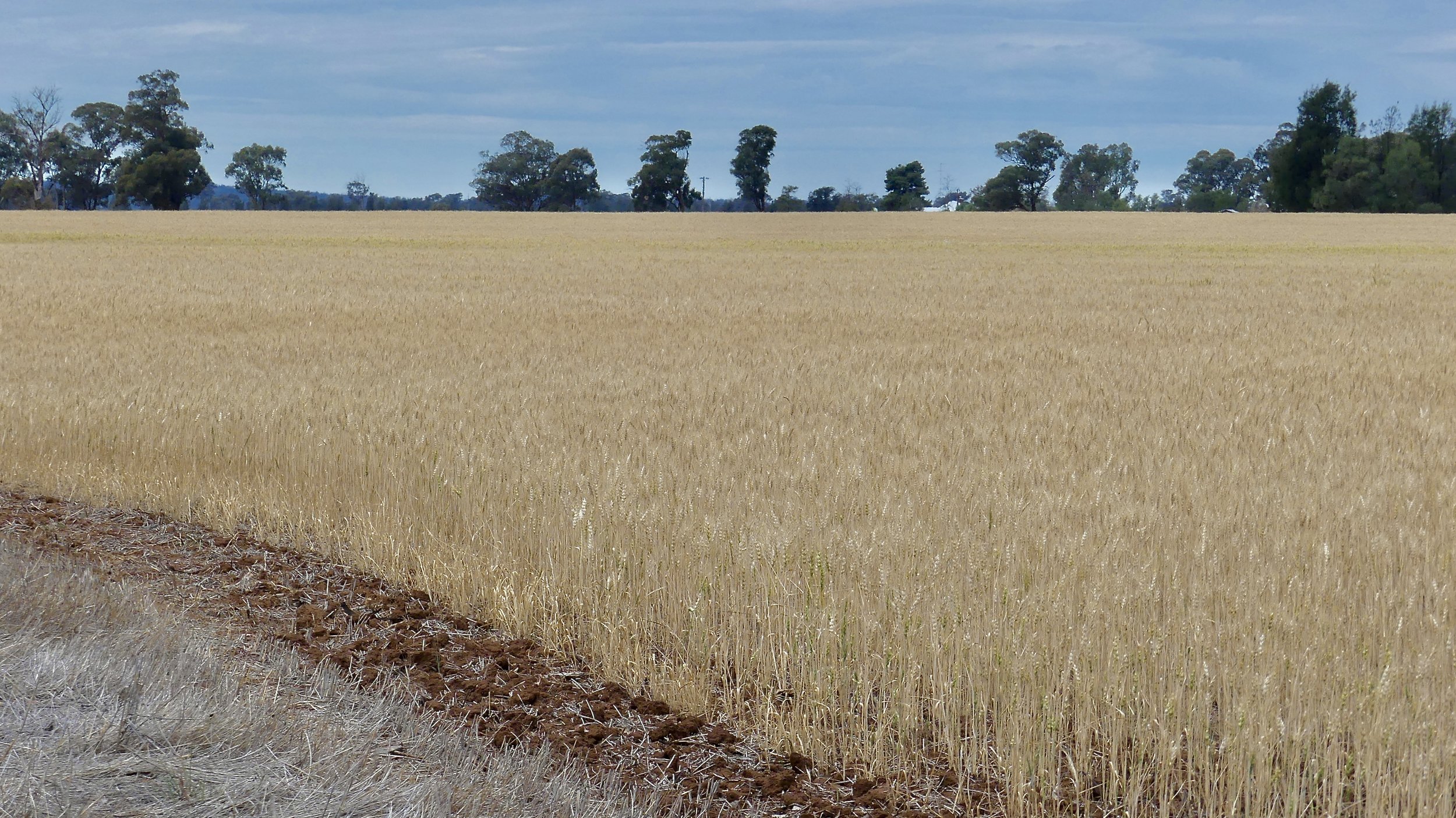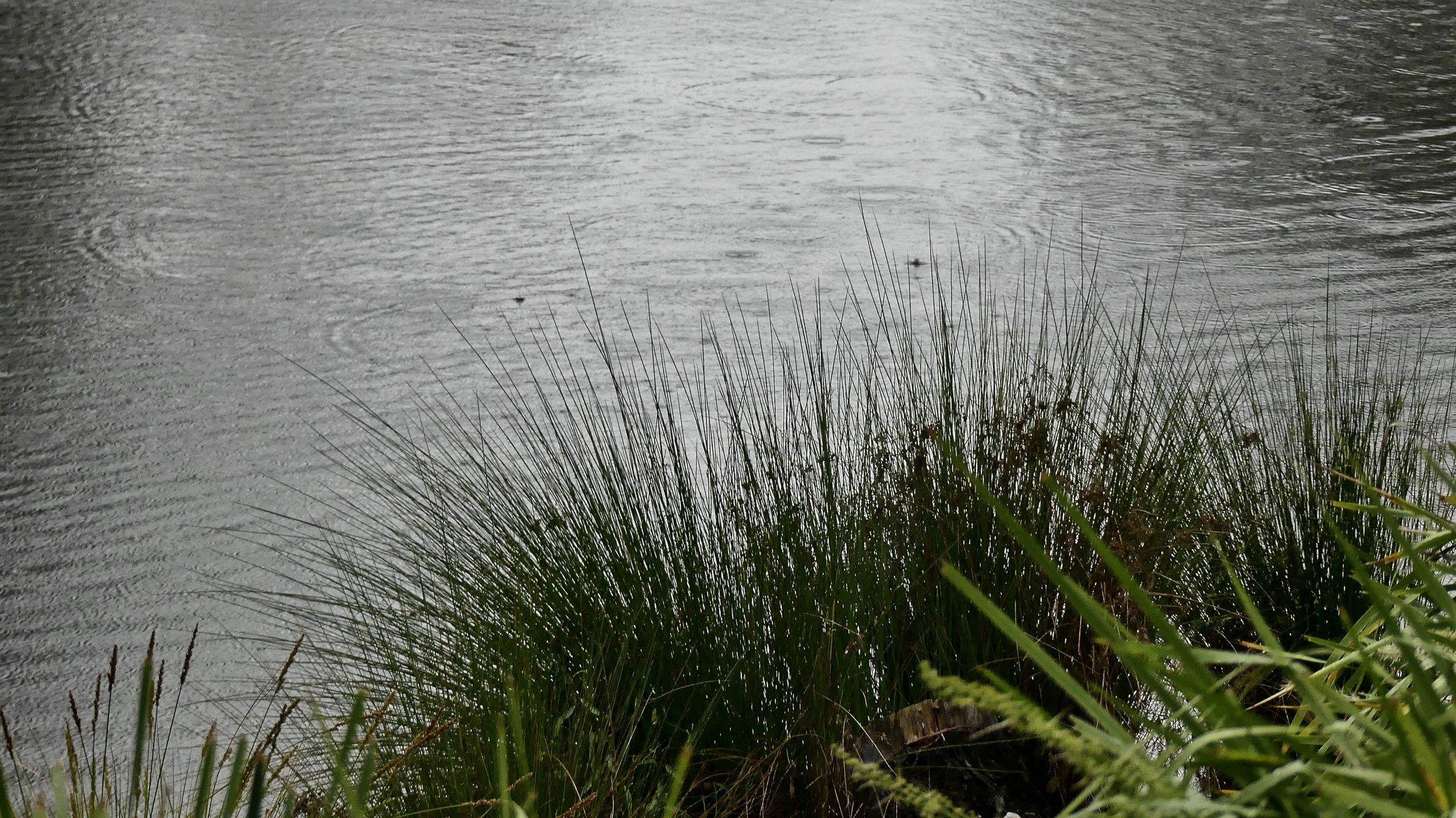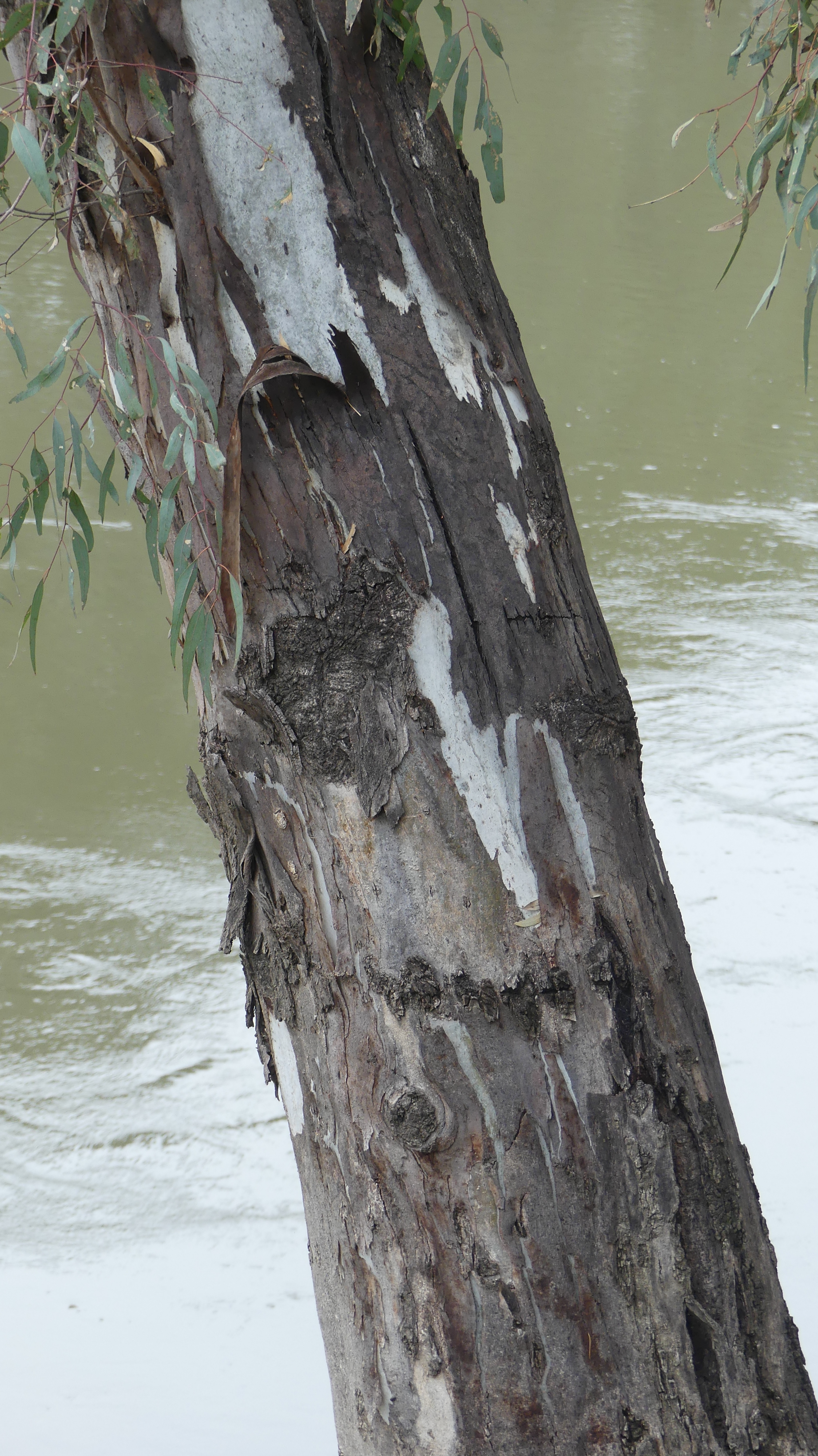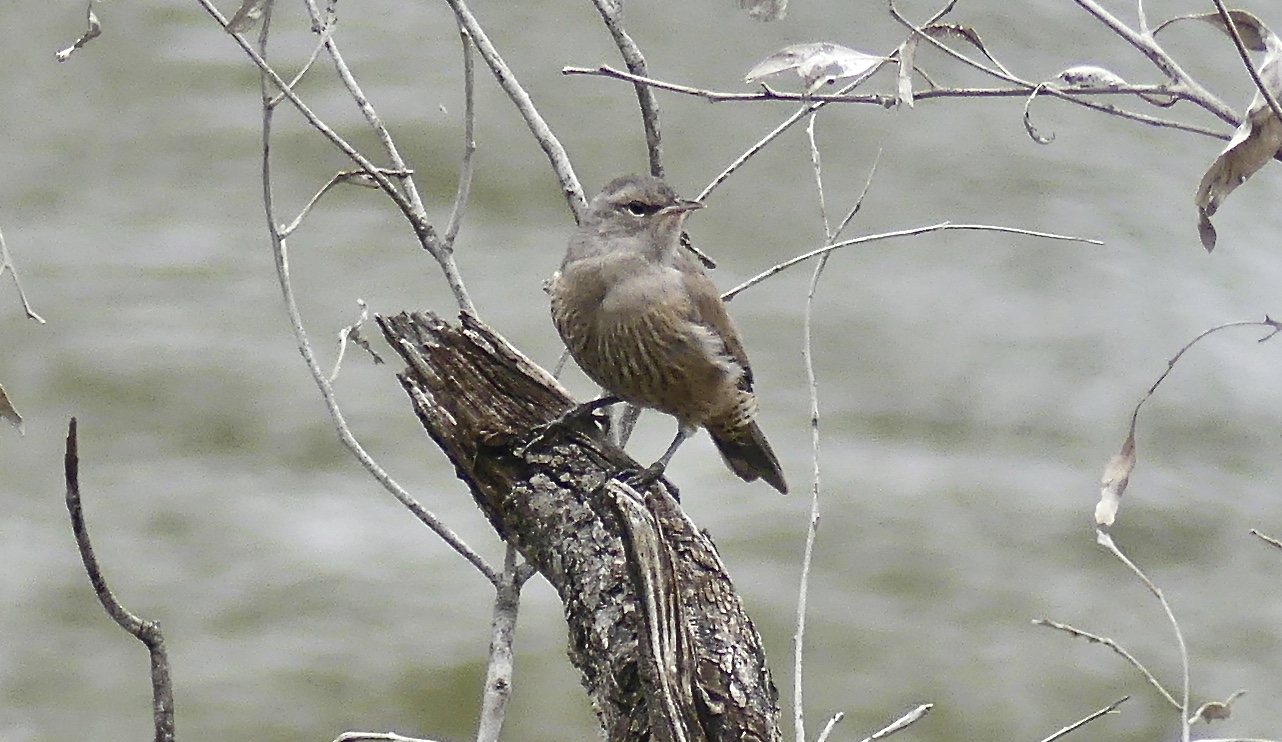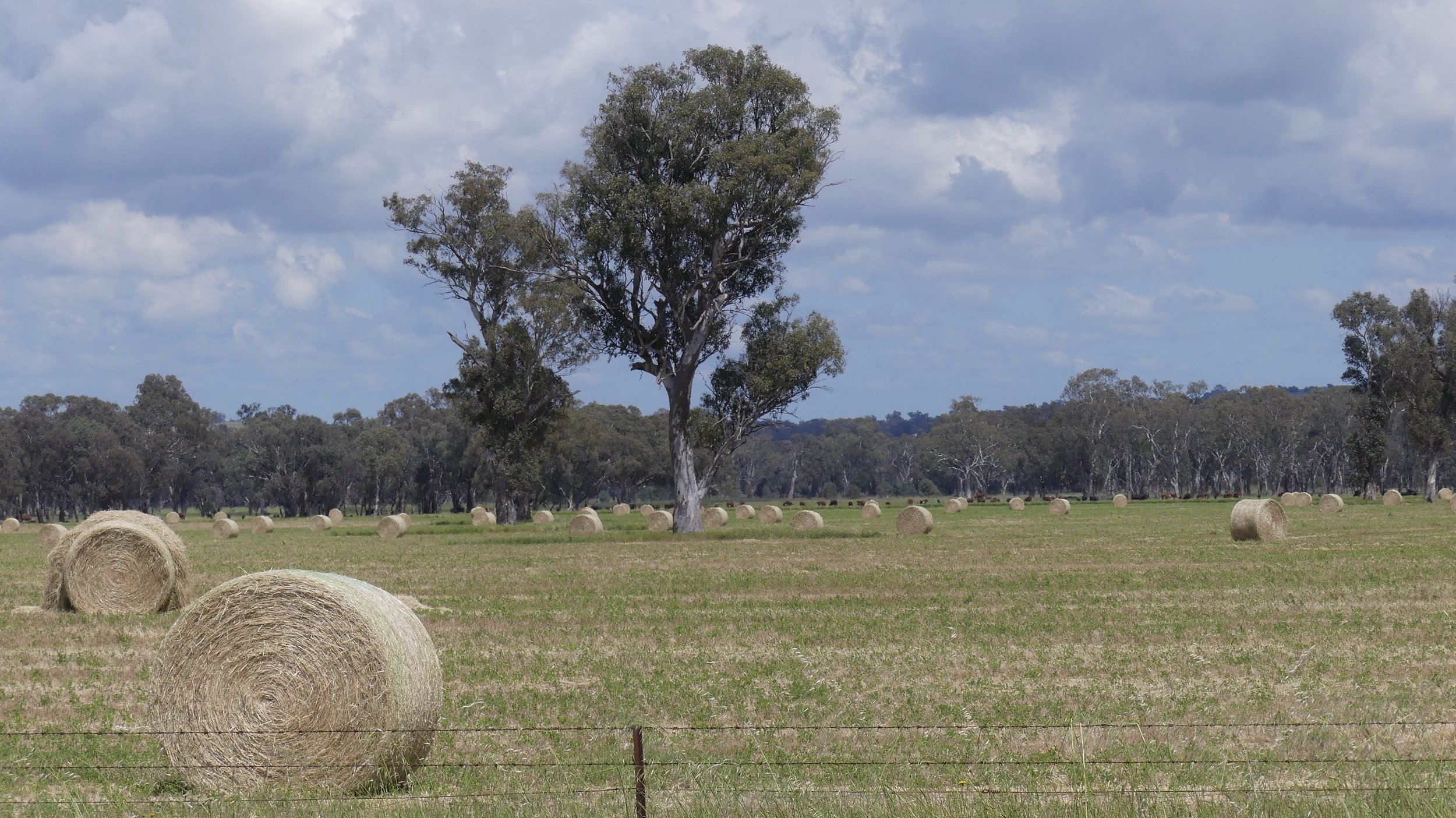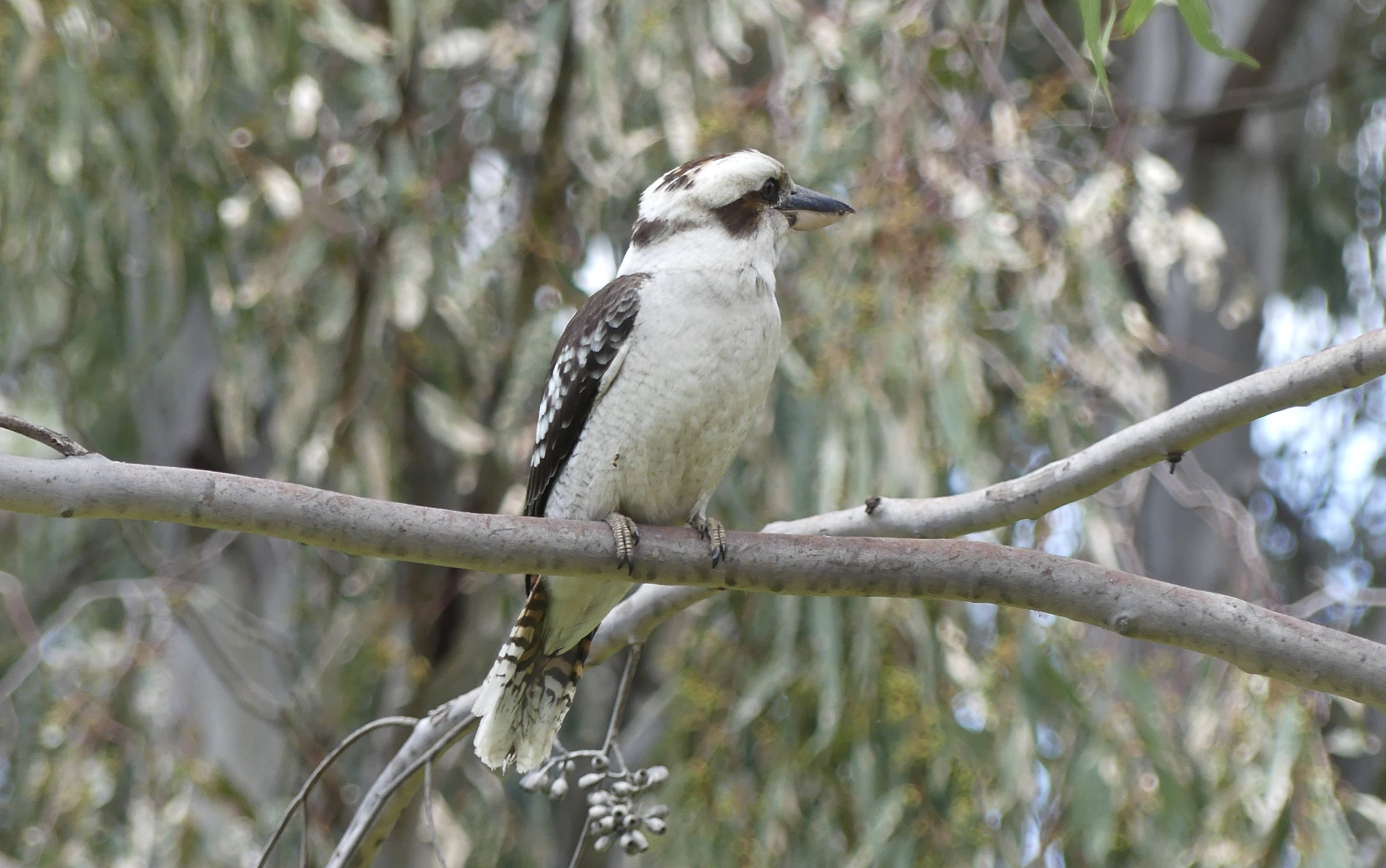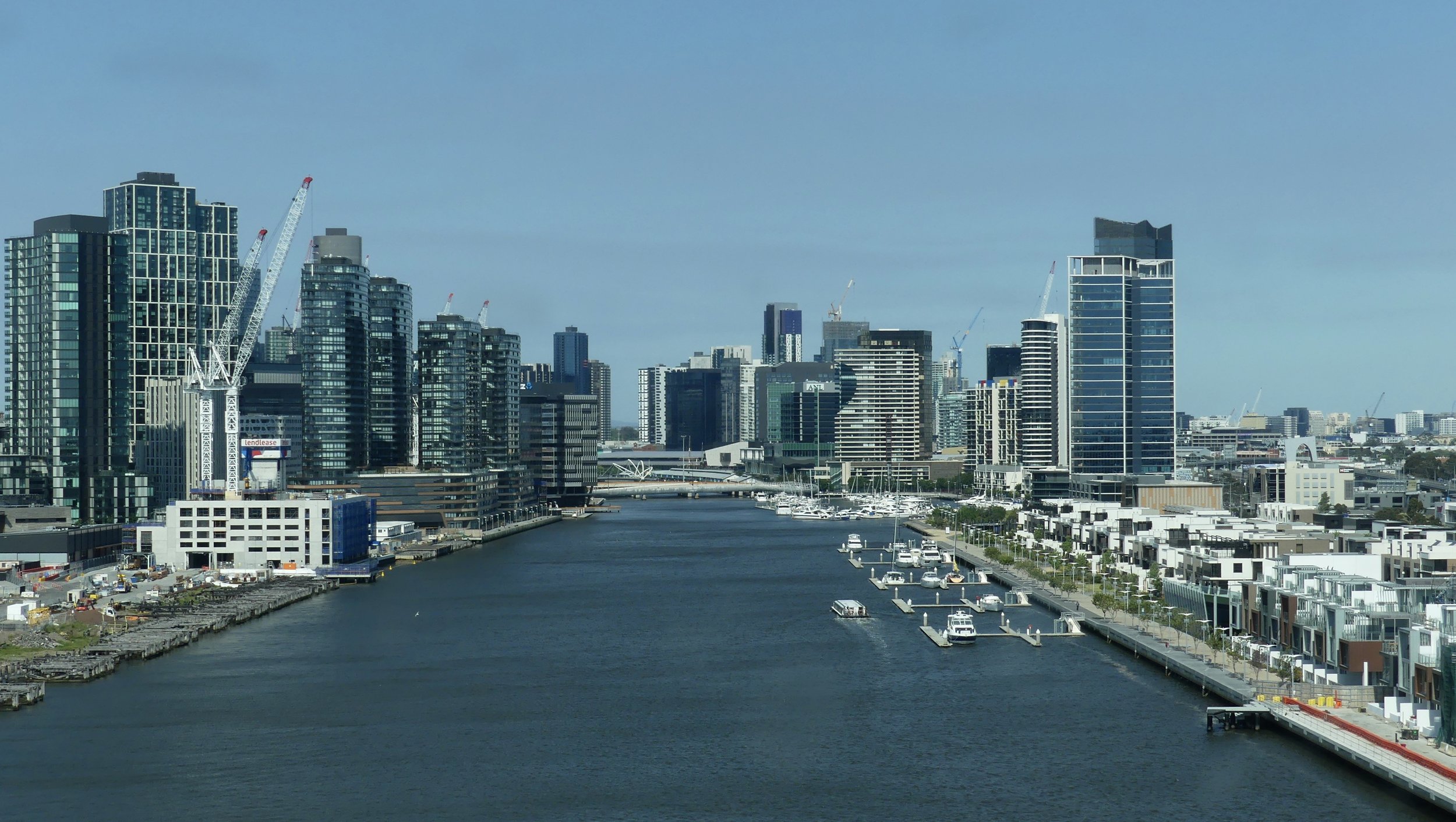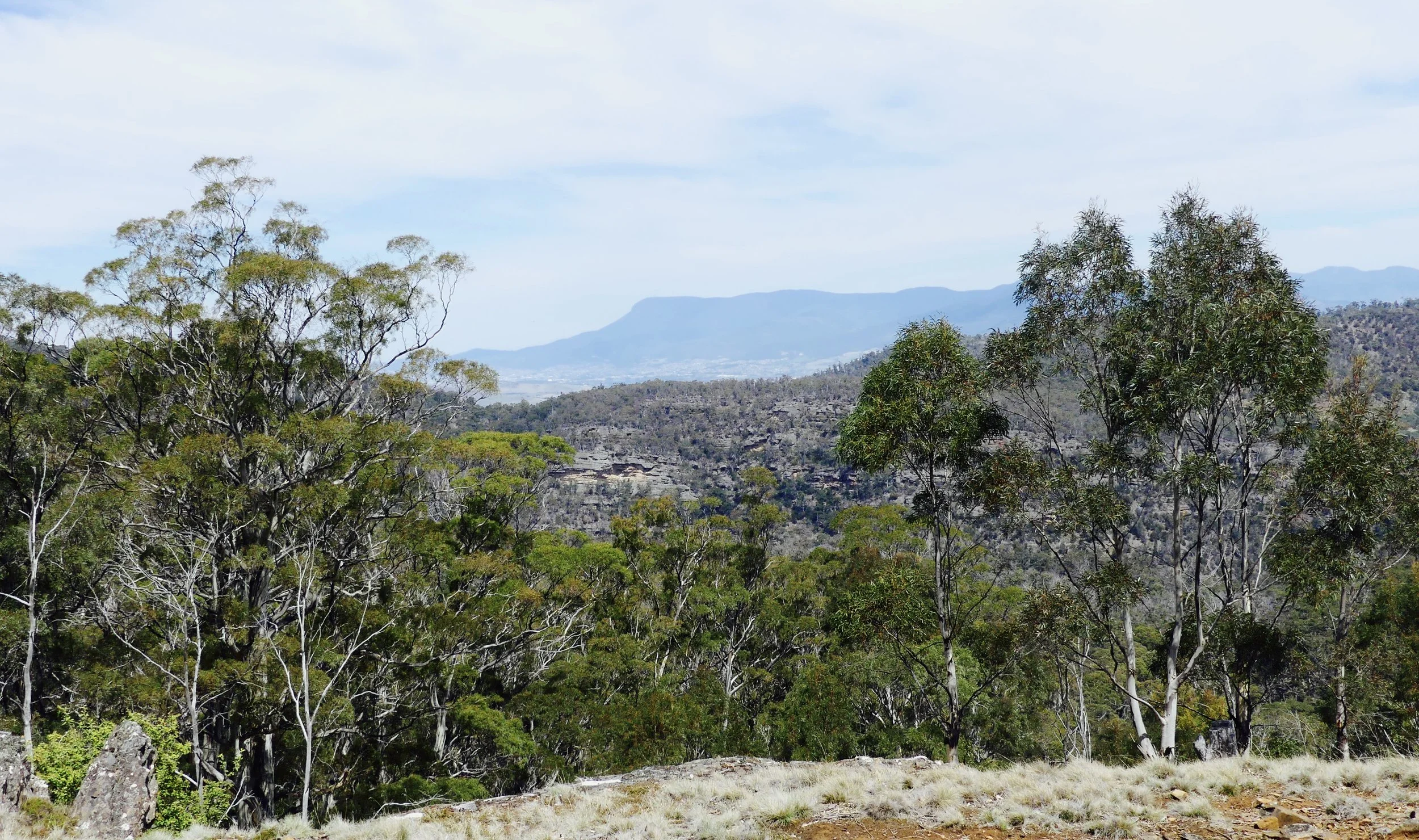A journey to Melbourne
On Friday, 27 October we set off from Brisbane for Melbourne, by car. It was a beautiful sunny morning, and Brisbane looked green after recent rain. We briefly reminisced about the flaming poincianas on our arrival, back in January 2010. We didn't say goodbye.
For the first time ever, we travelled to Ipswich via the Logan Motorway, which just goes to show you can always try new tricks. This going-east-to-go-west route meant a considerable wait to get on to the Gateway Motorway from Wynnum Road in the morning rush. I probably protest too much about bad traffic-light synchronisation, but how long can anyone sit contentedly at red lights before they begin to resent the waste of life? We are well practised in Australia, but not accepting. It's the over-complication problem again, in this case multiple rights of way at junctions.
The Fassifern Valley looked beautiful in the sunshine, but no time for repeat photography on this road trip; only welcome signs delineating the route, and completely new subjects. We soon reached Cunninghams Gap: the Highway had been almost empty heading away from Brisbane.
Warwick was a coffee stop. I realised I had never taken a picture of the magnificent sandstone church that dominates the town's skyline in all directions. I love the perfectly positioned palm.
From there, we continued on the Cunningham Highway to Goondiwindi, ground we'd covered at the start of 2015's epic Outback trip. Then, we were en route for a different state capital, Adelaide.
It's a long way from Warwick to Goondiwindi – 200 kilometres – with not much in between. The drive is easy, the road mostly straight and empty. There's lots and lots of eucalypt forest before it gives way to agriculture that includes olive groves, which always surprises us in Australia. We spotted a large, high-flying V of Australian Ibises, as we had when travelling along here previously. I looked forward to the palms of Inglewood, the silo sentinels of Yelarbon, and turning south on to the Newell Highway, therefore avoiding Goondiwindi – been there, done that.
Five hours or so on from Brisbane, there was this, just before the town of Boggabilla…
Moree Plains Shire is flat and enormously productive, agriculturally. It grows grains and pulses, cattle and sheep, cotton, olives and pecans. Apostlebirds made the most of spilt grain in a lay-by where we stopped for lunch.
Travelling across New South Wales, you pass through farmland and forest threatened – or already laid waste – by extractive industries. The Narrabri Gas Project, southwest of the town of Narrabri, is a plan for 850 gas wells over 425 well-pad sites, mainly in the Pillaga State Forest but also on private land. A pipeline will have to be constructed to get the gas into the distribution network. Only this week, APA Group (formerly Australian Pipeline Trust) surveyors, accompanied by 'security', clashed with landowners after sneaking on to properties without warning or permission. This is what's at risk from the gas project. Parts of the Leard State Forest, southeast of Narrabri, have been destroyed by the Maules Creek and Tarrawonga coal mines. This publication is from 2016, but will give you an idea of the impacts on ecosystems.
We stayed the first night in Narrabri. It seemed a sleepy little town in the heat, with its throwback shop fronts, although the pub where we stayed was Friday evening lively. Narrabri didn't wake up by the time we left the following morning. I'd discovered a most impressive silo that had to be photographed prior to departure.
We drove south along more empty roads through the Pilliga forest to Coonabarabran, which I still struggle to pronounce. The landscape grew hillier and more interesting, dotted with an optical telescope (Siding Spring – 'where the Warrumbungles reach the stars') and, a bit further down the road, a big radio dish (Parkes, below). The Dish, by the way, is a film telling the story of the role of Parkes Observatory in relaying pictures around the world of man's first walk on the Moon.
I loved Gilgandra's traditional Aussie windmill, but Dubbo's welcome sign was a mess, and random if you're not familiar with the town's nearby zoo. (We don't do zoos.) Forbes's sign was similar in style to Parkes's, but couldn't compete, so I photographed the station instead. It's on the Sydney line and a striking colour.
In 2015, we turned significantly west at West Byalong to drive through the Riverina to Hay. This time, we left the Newell Highway just before West Byalong, on the B85 south to Barmedman, a curious name. It was still big grain country.
Under increasingly grey skies, we reached Wagga Wagga (meaning 'place of many crows' in Wiradjuri, and pronounced Wogga Wogga). It is New South Wales's largest inland city and was our destination for the night. I've always wanted to visit Wagga Wagga because of its great name, but also because it sits on the ridiculously wiggly Murrumbigee River, Australia's second longest. It flows almost 1500 kilometres from the Snowy Mountains to its confluence with the Murray at Boundary Bend in Victoria. Murrumbidgee means 'big water'.
It might be big, but we couldn't find it. It was raining quite hard by then in Wagga Wagga, but we could see on the map that our accommodation was close to water, which we assumed, as I quickly grabbed camera and waterproof, was the city's famous watercourse. It was, in fact, Wollundry Lagoon. Still photogenic though, in the gloom.
Duck in raindrops
Next morning, of course, I had to find the real thing. I must admit, the Murrumbidgee was disappointing, the vegetation on its banks unspectacular. Once I'd warmed to a theme, however, the riverside became more interesting. There were a few birds, including a jumping Kookaburra. He looks superimposed on the green background in the photo below: he leapt at precisely the moment I clicked.
'We are fam-a-lee'
Brown Treecreeper
By the time we left town, we still hadn't had coffee. Ever optimistic, despite it being a Sunday, I hoped for a bakery in Culcairn, which sits on Billabong Creek roughly half way between Wagga and Albury on the Olympic Highway. I parked by a row of magnificent palms: what a charming little place it was, not only with an open bakery, but a splendid silo, too. What more could a girl ask?
An hour or so south of Wagga Wagga you can join the Hume Highway (M31) and whiz straight into Melbourne until you hit the Western Ring Road (M80). Simple is not always desirable, however. I wanted a picture of the Welcome to Victoria sign on the border, and I figured, mistakenly, that I stood a better chance of getting that by crossing the Murray in the middle of Albury. Oh, what a disappointment. The river looked quite nice, as did its guardian.
We then joined the Hume Highway, having reached that stage of the journey when the end is in sight, mentally, and you need to get there. No point in detours off the Highway, even though I felt some compulsion to record the Victorian landscape. This was my token effort, taken from the car park of a rest area where we stopped for lunch and a change of driver.
The Welcome to Melbourne sign took me completely by surprise, and I didn't capture it. Why did that matter? We'd visited Melbourne many times before. The city centre shimmered in the distance at this point.
We wouldn't be returning to Brisbane, that's why. From now on, Melbourne is home.
I snapped away like a tourist as we drove over big bridges and edged our way along the West Gate Freeway, desperately seeking the St Kilda exit. I was excited yet full of trepidation. Brisbane and Queensland were good to us for more than seven and a half years: a state capital rising to the task; some of the best beaches in the world; Outback adventures; an introduction to phenomenal flora and fauna, including bird characters you couldn't make up; extraordinary and often terrifying weather; crazy politics; and friends I hope to keep. Perhaps we'd 'done' Queensland though, and it would be a shame not to try a different Australian city. So, here we were, following a turn of events and an opportunity that presented itself.
All our belongings were still trundling south in a container on a train, and not arriving for another couple of days, but we collected the keys to our new place that afternoon. Years ago I fancied living in Brighton, UK; now I found myself in Brighton, Victoria. And I've always imagined how lovely it must be to live by the sea and watch weather rolling in. I'm about to find out.




